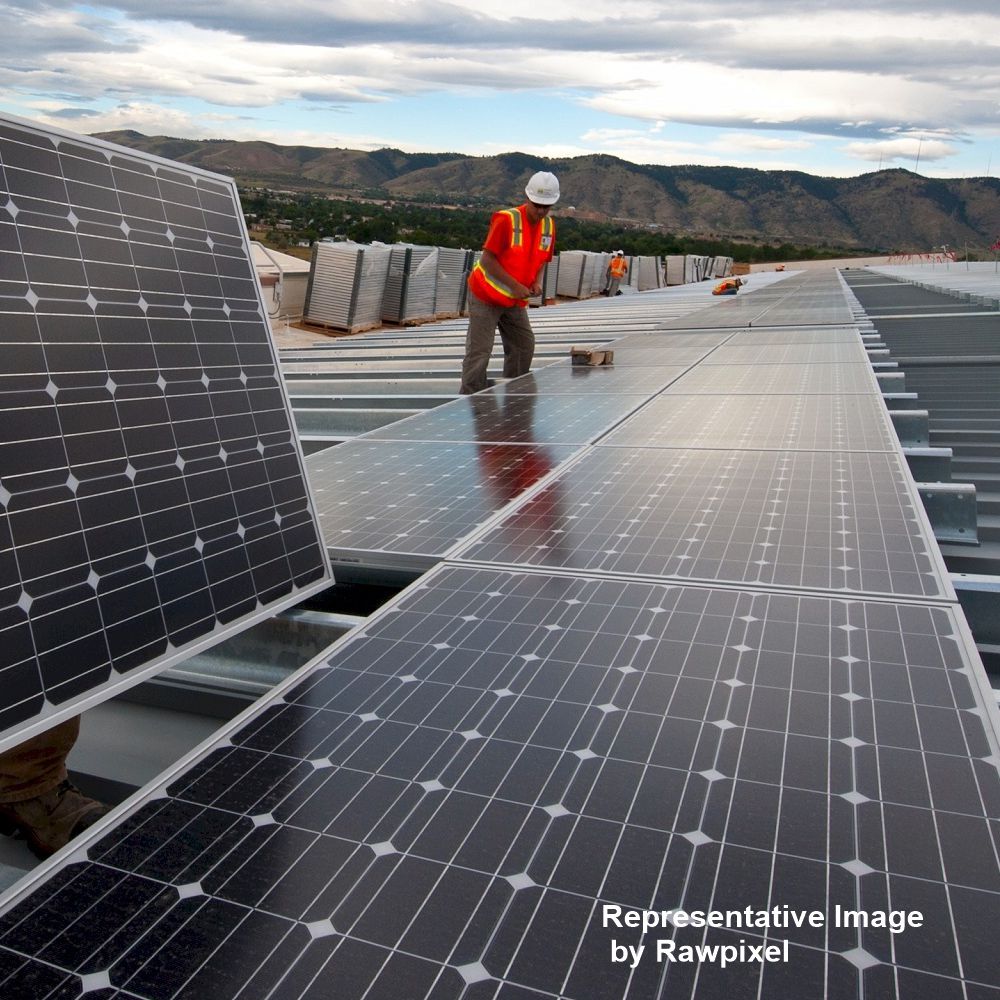“The Customer is more demanding today than ever, resulting in shrunken lead times and more agile & responsive supply chains. Businesses are challenged, resulting in leaner and more efficient supply chains. Last mile deliveries and reverse logistics have gained much more importance today specially with the maturing e-commerce ecosystem. With these transformations, supply chain is no longer a support function, in fact, organizations today have an opportunity to leverage their supply chains effectively to create business disruptions,” enlightens Sourabh Raghuvanshi, VP & Head Supply Chain, Lava International Ltd., during an interview…
What distinguishes Lava from the already established brands in the country?
Lava has a single layer distribution system, which is unparalleled and penetrates deep across the country. We work with 1300+ distributers who in turn serve 1.6 lacs + retailers. On the after-sales front, we have a strong network of 1000+ customer service centers. We have our own design house and manufacturing plants. Then there is supply chain process as the strong backbone of the organization stitching together all these facets. To sum it up, end-to-end control across the entire value chain has helped Lava in carving out an established name for itself in such a fiercely competitive marketplace.
How have you designed your supply chain strategy in line with the company’s strategic vision?
We are a customer centric organization, which attempts to add value in the lives of our customers with every action. Supply chain design, both on upstream as well as downstream side, is built keeping in mind this philosophy to fulfill the need of providing the customer a reliable and useful product at an affordable price with ease of availability. On the upstream side, we have strong strategic sourcing abilities to procure raw material both for import and indigenous items, which gives a competitive edge to the company.
On the downstream side, we attempt to exist as close to our customers as possible with our 22 fulfillment centers spread across the country. Additionally, a well-knit web of 70+ national and regional logistics partners serving customers at jet speed is another arrow in our quiver. Over time, we have also invested in and developed strong demand forecasting & analytics capabilities, which help the organization plan ahead.
You have a nationwide network of 1.65 lakh retailers in the country. How do you instill the spirit of trust and transparency to enhance business?
If you visit any retail shop in the country, you will realize that the biggest cost of running a business is inventory. It can be physical inventory at his shop, his account receivables against the inventory sold or his account payable against the inventory procured on credit. We attempt to help retailers manage this cost in 2 ways:
1. We don’t burden them with large inventories from our brand. This is contrary to prevailing psychology where brands generally want to push their inventories into the retailer’s shop. On the basis of the daily sales and market demand, we attempt to keep just the right inventory with the retailer. With effective supply chain management control, we are able to replenish stocks fast and hence sustain business for retailer as well as for brand with lean inventory levels.
2. Through our “MyLava” application, which is designed specifically keeping in mind retailer and field force usability, we are enabling retailers on the technology front too. Through this App, a retailer has the ability to trace his entire inventory and related payments, returns, etc., which enables him to carry out his business better and more efficiently.
What are the criteria on the basis of which you select a 3PL?
Lava is known to create entrepreneurs and also support small entrepreneurs to grow bigger. We work hand in hand with such small entrepreneurs and help them create more jobs to boost the nation’s economy further. At Lava, we believe in creating partners and not vendors. So, long term association and mutual trust is key when we select a 3PL. While selecting a 3PL partner, we do look for mutually converging thoughts on culture and vision on the way we want the partnership to flourish. Secondly, past performance and industry record of 3PL is obviously important. Thirdly, the financial capability to put in required capex and to run operations seamlessly also forms an important part.
What are the aspects that you feel 3PLs in India are lacking and demand attention?
I believe there is still so much scope with most 3PLs standardizing their services. There is too much variability in performances across geographies and performances across different times of the year. The solution lies in the right investment in technology. In India, automation in warehousing and logistics with 3PLs will go a long way in giving 3 bene. ts: consistent service levels, increased efficiencies and transparency across the value chain. Such a scenario will be a win-win for both 3PLs and their clients.
What has been one of the most challenging projects managed by you at Lava?
We are trying to build an automated replenishment system for retail ecosystem in the mobile handset industry. This has never been done before. The ask is simple: Right inventory at the Right time and at the Right place. The right place happens to be 1.6 lacs+ retail shops in the country.
There are obvious supply chain as well as technology-related riddles to solve while we implement this. But the reason I rate this as the most challenging part is because of the numerous external factors involved such as huge demand variability, credit system prevailing between retailers and our distributors, creating trust with retailers that we will replenish only the right amount of inventory and also the changing competition scenario in the country. In a way, riding on our supply chain and technology backbone, we are aspiring to change the way sales and distribution happens in this country.
Please enlighten us on the innovative supply chain strategies implemented by you…
We are continuously putting in efforts to make our supply chain more agile and responsive with each passing day. All our destinations are connected through all modes of shipment – air, road (normal as well as express mode) and rail. We switch between modes every day on the basis of the demand and supply gap at that location.
To bring in even more cost efficiencies, we are continuously evolving our network design, devising milk route runs and increasing FTL turns. We build our supply chain strategy in a way that we are able to react and absorb fluctuations in capacity requirements in almost no time. This is also a key focus area.
How is the rural supply chain network being designed and sustained by you as this is one of the biggest markets in the country?
Rural market comes along with inherent problems due to the depth and width of distribution that a player like Lava operates in. We tackled this problem with a two-pronged approach: First one is “Go Local” and second one is “Enable Local”. We don’t rely solely on national logistics partners when it comes to the rural market. We decided to “Go Local” and our team has done exceptionally well in identifying local players who help us extend our supply chain in rural areas and tier 3 towns.
However, scouting local partners alone in not enough. Second step for us is to “Enable these local partners” by integrating them with our technology platform, providing trainings and enabling them with best practices and processes. Significant work has been done in this area with tangible results. But I believe we still have a considerable path to cover in our e. orts to achieving excellence in rural supply chain.
How do you ensue customer satisfaction on the back of an impeccable service?
Best mantra I believe is to have a mechanism for “Continuous feedback” from your customers and then ensuring “Continuous improvement” on the basis of the feedback received. At Lava, we have a well-established mechanism to seek feedback from our internal and external customers on a regular basis. We measure and compare ourselves regularly on the customer satisfaction index and take actions to improve further. It is important here to keep your ears open for feedback and keep ourselves open to criticism and learning.
What are the technology tools deployed by you?
Lava, as an organization, has always believed in the benefits of continuous technological advancements and has made regular investments in technologies. On the supply chain front, we recently adopted JDA solutions and integrated it with our SAP systems to make our demand and distribution planning system far sharper and more robust.
All our inbound supplies including import shipments are tracked on a SAP integrated “vendor portal” whereas we are in the process of rolling out a “transporter portal”, which will bring all our outbound customer supplies on a single platform, creating transparency and generating efficiencies. On the after-sales side, spare parts’ demand generation and allocation is completely automated having no human intervention.
What would be your advice to the younger talent in supply chain who are wanting to join this most exciting stream?
“Get your hands dirty”. There is no substitute to learning by doing it yourself. During my formative years in the industry, I still remember to accompany and sit beside the truck drivers at times in the entire journey from the vendors’ end to ensure shipment reaches overnight to our production factory. My tea breaks used to be with blue collar workers on warehouse floors and I never hesitated to do and learn what they were doing. Learning through such experiences is always immense and stays with you for a lifetime.
Secondly, we have entered in an era where one’s skills are likely to become obsolete every few years. Hence, continuous investment in upgrading your skill sets and keeping yourself updated on changing industry know how is absolutely critical.
Supply chain over the years has witnessed tremendous transformation. Your views on the same…
Industries behave in line with changing customer expectations and business needs. Supply chain domain is no different to this rule. The customer is more demanding today than ever, resulting in shrunken lead times and more agile and responsive supply chains. Businesses are challenged, resulting in leaner and more efficient supply chains. Last mile deliveries and reverse logistics have gained much more importance today specially with the maturing e-commerce ecosystem. With these transformations, supply chain is no longer a support function, in fact, organizations today have an opportunity to leverage their supply chains effectively to create business disruptions.
Where do you see the future of supply chain, with lot many policy changes in the offing, in the times to come?
Simplification of the taxation structure has helped. Modi. cation in waybill rules as well as transition to electronic waybill system nationally also was a welcome step. No doubt, with these changes, transportation is more hassle free and quicker today. Industry needs more such positive changes.

Categories

Magazine Editions























